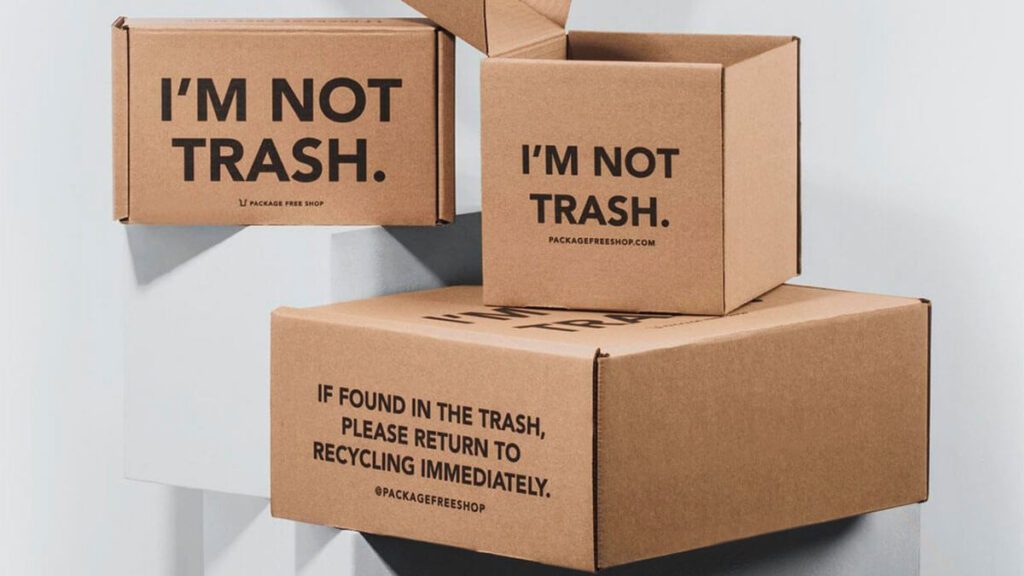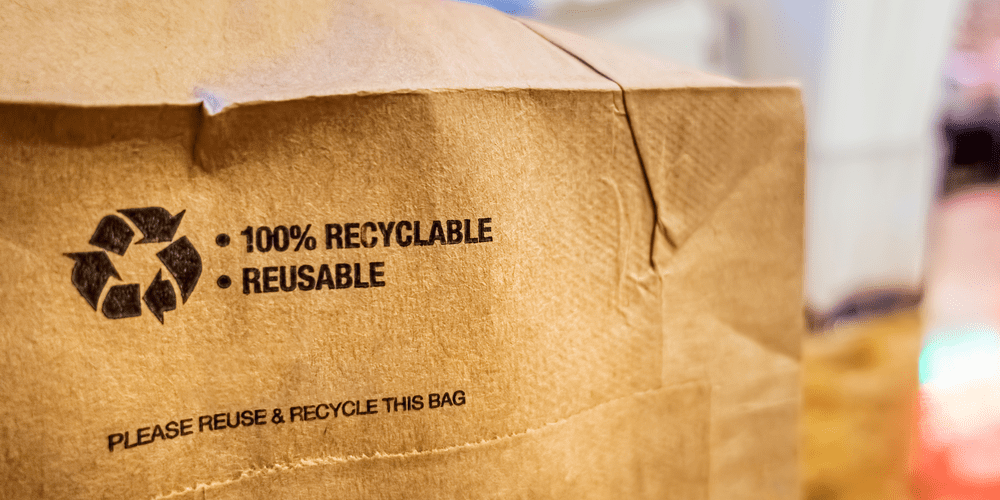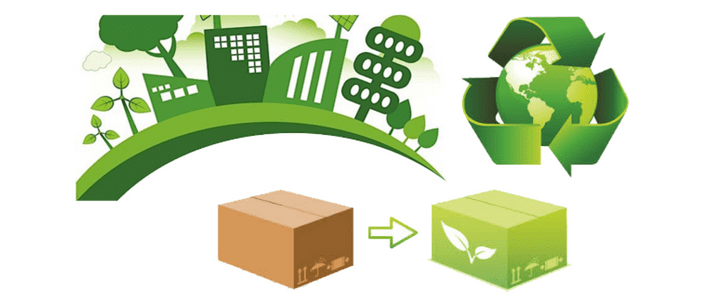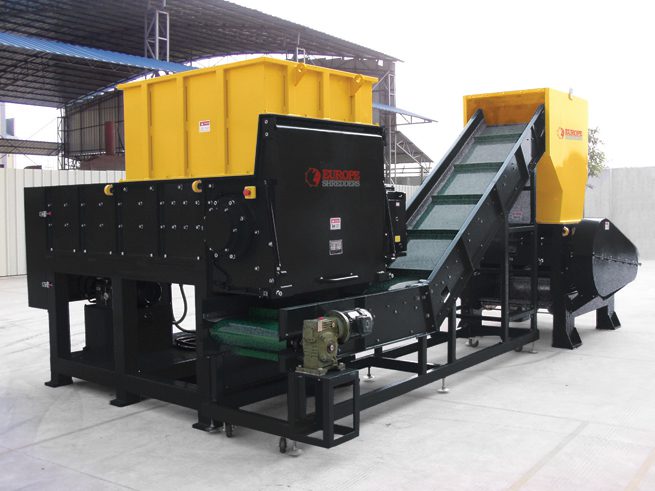Top 8 Tips To Reduce Packaging Waste- Sustainable Packaging
Table of Contents
Sustainable Packaging
The trend of using sustainable packaging is gaining momentum, and it will see a consistent rise in the future as well. More and more companies are using packaging materials that are eco-friendly throughout their entire life cycle, including in their functionality, marketing, and after their use has been fulfilled. Sustainable packaging also helps in reducing the costs involved with packaging design.
Aiming for a green supply chain not only reduces costs but also is socially responsible. Shippers are turning to innovative solutions to reduce packaging waste and emissions as key components of their sustainability efforts.
Packaging waste is an important issue businesses and consumers alike must address as it accounts for as much as 40 percent of all solid waste in municipal waste streams.
Shippers need to seek innovative solutions to reduce waste generated by packaging. The good news is that there are plenty of strategies worth trying try: new materials within boxes, new and better boxes and better consumer education.

Here are top tips to reduce packaging waste-
1. Using Recyclable and Reusable Materials
Use packaging materials that are either reusable or recyclable. You can reuse the materials for various purposes such as using left-over cardboard boxes to store office equipment. This helps in reducing waste and preventing the unnecessary purchase of products.
Using recyclable materials like cardboard or paper for packaging helps you convert them into other products that can be effectively used later. This ensures that the packaging materials don’t go to waste or to the landfills once they are discarded.

2. PACK LIKE A PRO
Online retailers are sending deliveries in boxes that are too big—creating an extra 2 billion pounds of waste every year—and customers are noticing.
A Sealed Air study shows 77 percent of customers note the packaging a retailer uses for e-commerce reflects its environmental values. This means that everything matters, down to the packing of the order. To meet customer expectations for more sustainable packaging, many shippers are turning to automated packing solutions.
Automated packing solutions optimize all steps of order fulfillment. These systems scan, build, fill, fold, and label each order in a fit-to-size parcel in as few as seven seconds.
They even can build a parcel around single or multi-item orders with variable dimensions. By creating a fit-to-size parcel, automated packing solutions eliminate void fill and reduce the amount of corrugated material used by up to 20 percent.
These innovative systems can also place return labels and seal the parcel with reusable tape, which allows customers to reuse the box and the printed label for an easy and environmentally friendly returns process.
Customers are not the only ones happy with this green initiative. Shippers like it too, because it can save money.
As shippers install automated packing solutions to get orders out the door fast, delivery is also top of mind. Shippers know customers want their orders on time and hassle-free. That’s why many offer parcel lockers as a final-mile delivery option.
Only 1.5 percent of all parcels delivered to a parcel locker require a second delivery attempt, and only 0.8 percent require a third attempt, according to a ShipMatrix study.
Shippers commonly place parcel lockers at apartment and condominium complexes, in brick-and-mortar stores, and even at convenience stores. This gives customers 24/7 access to their orders, resulting in fewer delivery attempts from carriers, which means shippers can reduce their carbon footprint while lowering freight costs
3. Use Sustainable Raw Materials
It would be a good idea to source sustainable raw materials to fulfill your packaging needs. You could even ensure that the packaging originates from a sustainable source. Turn to sustainable forests to source the wood required for manufacturing cardboard or paper required to produce packaging material. Other sustainable goods you can opt for include cotton, new man-made fibers, and wood from sustainable farms.

4. Bring in an Industrial Shredder
Invest in an industrial shredder as it can shred almost anything that’s made up of fiber, such as paper or cardboard. Shredders can generate a lot of shredded material, which can be used to fill packaging boxes. These paper cushions do a great job of protecting the corners of your cardboard boxes. Moreover, shredded paper is a practical and eco-friendly way to pack and ship your products too.

5. Seek Biodegradable Packaging
Using materials like corn-based plastic is recommended as it can be broken down in a commercial composting facility. Biodegradable packaging ensures that none of the packaging material goes into the landfills.
6. Use Stretch Wrapper for Safe Packaging
If you are transporting products around the warehouse, you can save on packaging and energy by securing the products together using stretch film rather than packing them in large boxes. Stretch film is easier to fit in bins and recycling containers.
It’s important to stretch wrap pallets of products for long distance shipping as well. Wrapping safe to ship loads can actually help the environment. How? By keeping damaged, unsellable products out of landfills. Find out more by reading Lantech’s blog “How Stretch Wrapping HELPS the Environment,” and learn how to wrap a safe to ship load “Quick Guide to Stretch Wrapping.”
7. Train your Staff
There may be occasions when waste is being created, or it isn’t being disposed of properly because the staff isn’t aware of the waste disposal processes that have been implemented in the facility. It could either be because they aren’t communicating with the warehouse operatives or because they haven’t been given the appropriate training. Training your staff would go a long way in reducing packaging waste.
8. Use the Right Loose Filling
Do not use a large package for shipping a small item, unless it is absolutely necessary. Avoid using the wrong boxes or wrong, loose fill. Understand what kind of loose fill packaging is appropriate for different types of items. Using the correct type of loose fill will help you protect the product better.
Reducing waste and disposing of it in the right manner will help in making your organization as well as the planet green. Implement sustainable practices in your facility and encourage your staff to embrace sustainability in different organizational processes.
Blog- Top 8 Tips To Reduce Packaging Waste- Sustainable Packaging
Leave a Replay
Sustainable Packaging Waste Sustainable Packaging Waste Sustainable Packaging Waste Sustainable Packaging Waste Sustainable Packaging Waste




